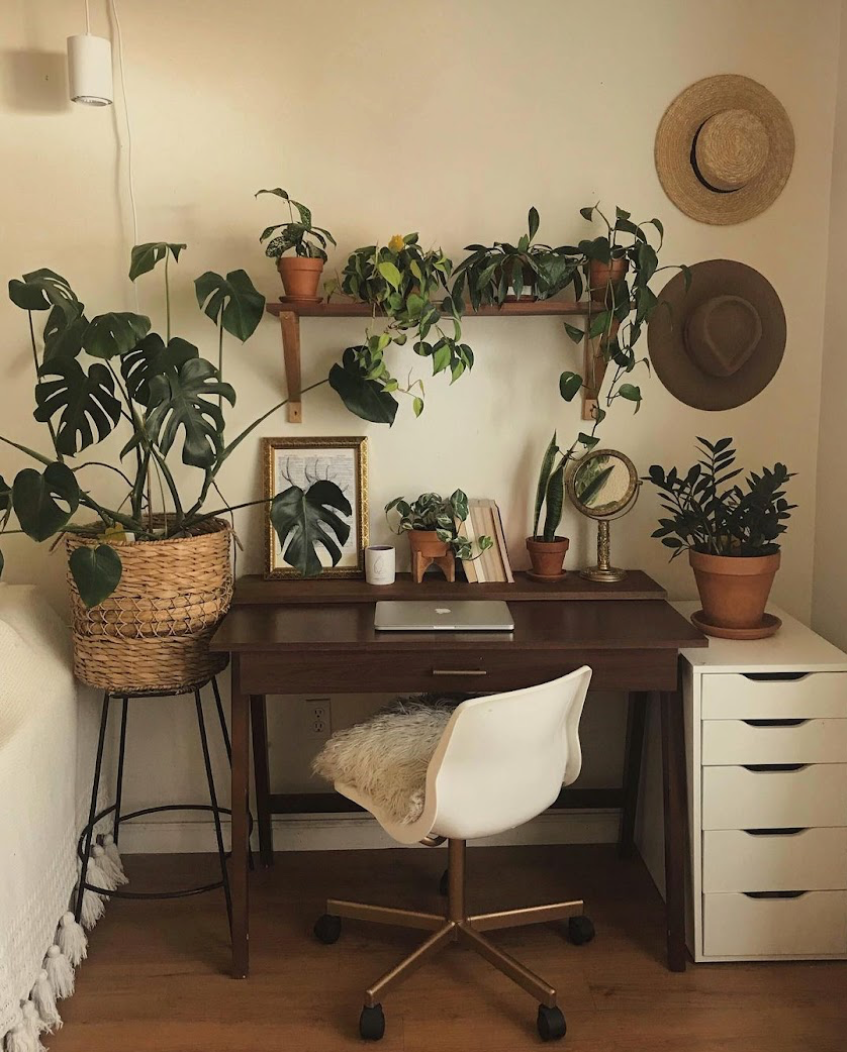When taking care of your plants, pruning is just another task that is vastly underrated but very important. You do not have to do this frequently, but you need to every once and a while to make sure your plant is as healthy as possible. It may not seem like the most important thing to do but it definitely has its benefits. Just like getting a haircut, pruning your plants will keep them healthy, neat and tidy.
Why is pruning your houseplants important?
Too large
As can be the case with the
Fiddle Fig Leaf plant, your plants can grow quite large. Depending on the pot your plant is in or the room size, you may need to trim your plants to keep them under control. Also, if you happen to have
good lighting for plants, then you may be dealing with lots of overgrowth that needs trimming back!
Discolored
If your plant has yellow or brown leaves, they are most likely dead leaves. In order to prevent this from affecting the plant, they need to be pruned off. Check out our guide on
Why plant leaves turn yellow to see the different reasons your plant leaves are yellow and if pruning could help.

Pruning a plant with shears via https://pxhere.com/en/photo/790951
Dying off
As you have your plants for longer and longer, the
plants will eventually start dying off. This is natural but it is important to remove the dead parts of your plant as soon as you can. Pests are attracted to the dead plant matter, so removing it will prevent the pests from harming your plant. Dead leaves lying in the soil is a prime spot for mold to grow so make sure to remove those as well.
Timing
Knowing when to prune your plants is almost just as important as pruning them in the first place. For indoor plants, pruning in the late winter or early spring is ideal as this is the start of the growing season. If your plant has flowers, it is smart to do it right after the flowering cycle to ensure you do not cut off any buds. For woody plants, it is good practice to prune dead branches and leaves when you see them.
What tools do you need?
First off, you will need to figure out which tool is right for which part of the plant.
Scissors

Small Gardening Scissors from Magnolia Network
Sharp scissors can be good for cutting back thinner stems. These parts of the plant are usually spindly and wiry, so scissors should easily be able to cut through.
Shears

Hand Pruner/Shear from Gemplers
Shears are good for thicker parts like branches or tree trunks. The curved blade on the shears allows for cleaner cuts.
How to prune your plants
1. Observe
Look at your plant. Is it leaning a certain way? Does it look healthy and alive? Are a lot of leaves clumped together and shading the rest of the plant? Many of these questions have answers that will tell you how to prune your plant.
2. Find right tools
There are two main types of tools you will need: scissors and shears. The structure of your plant is very important here. If the area you want to prune is thicker, such as a tree, you should use shears to prune. If the area is thinner, such as leaves, you should use sharp kitchen scissors.
3. Cut the plant
Once you have a game plan of what you are going to do, it is time to start cutting. Be careful as if you cut off too much, it is almost impossible to put it back. There is a
method called grafting where branches of different plants are taped together, but this process is very long and likely not worth it for your plants. When making your cuts, cut leaves right before the node or as close to the main stem as possible. Never cut more than 20%-25% of your plant at a time so you don’t stunt its growth. Try your best to make a nice and clean cut to maintain the health of your plant.
Things to be wary of
While pruning your plants can be very helpful for them, it could also be very harmful for them if it isn’t done properly.
Cleanliness
Make sure that you maintain a clean area and keep your tools sanitized. Just like how your skin keeps pathogens and bacteria out, the outer layer of plants keeps out pests and disease. When you cut plant tissue, you are now exposing your plant to these issues. Make sure to
keep your tools very clean and you should be fine.
Incorrect Cutting
When you make cuts, make sure to keep the plant balanced. You want to ensure that the leaves are not shading other leaves or plants. You need to make sure your cuts are clean and done in one cut so it can grow normally. Don’t cut off too much to ensure you don’t stunt the plants future growth.
Plants that can’t be pruned
Palms and pines form a terminal dominant bud (bud on the tip) but do not form latent buds (buds near the leaves lower on the branch). Pruning the terminal buds would then mean that the plant would then die. Orchids don’t need to be pruned except removing dead flower spikes. These types of plants do not need to be trimmed so be careful if you do own them.







